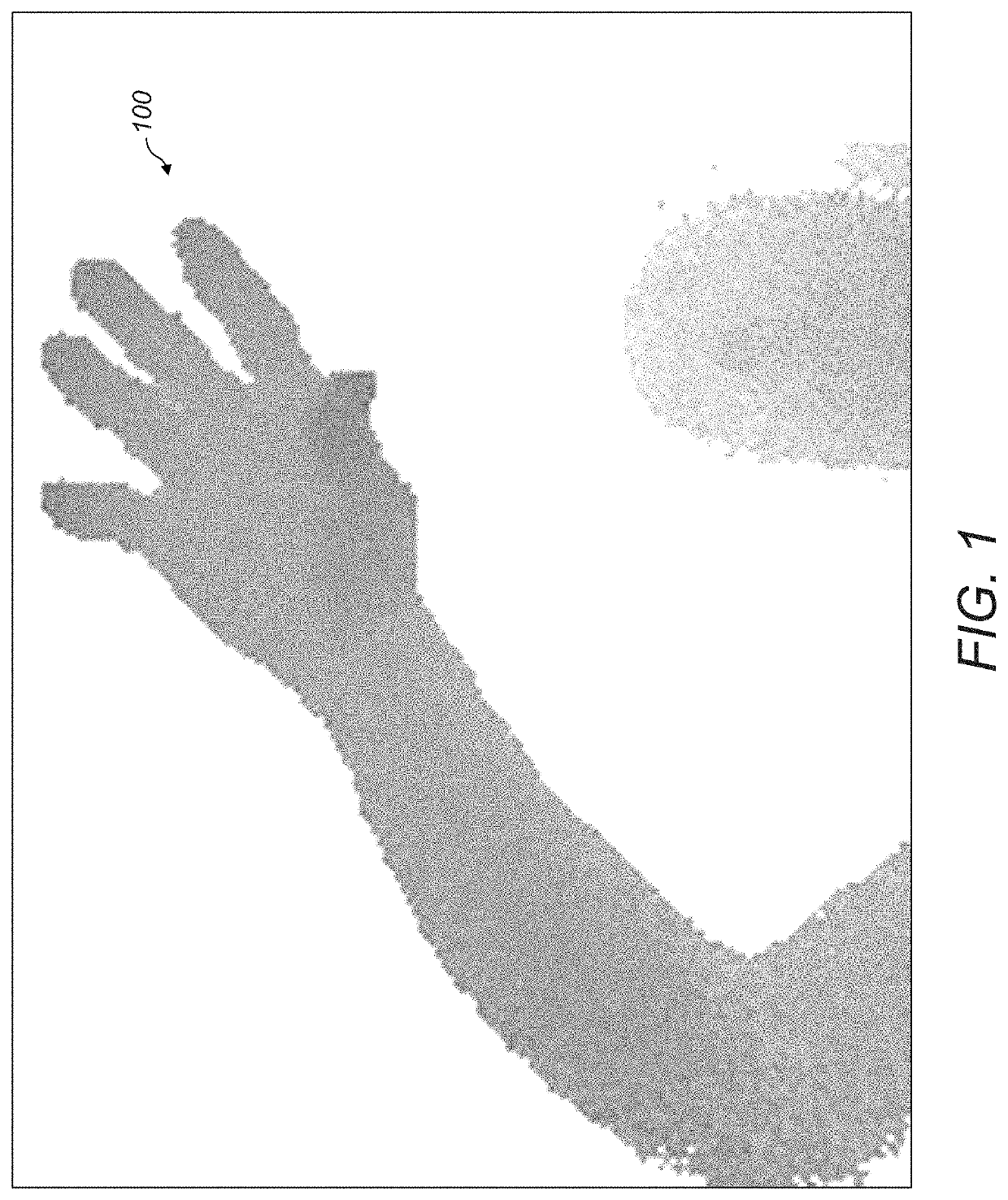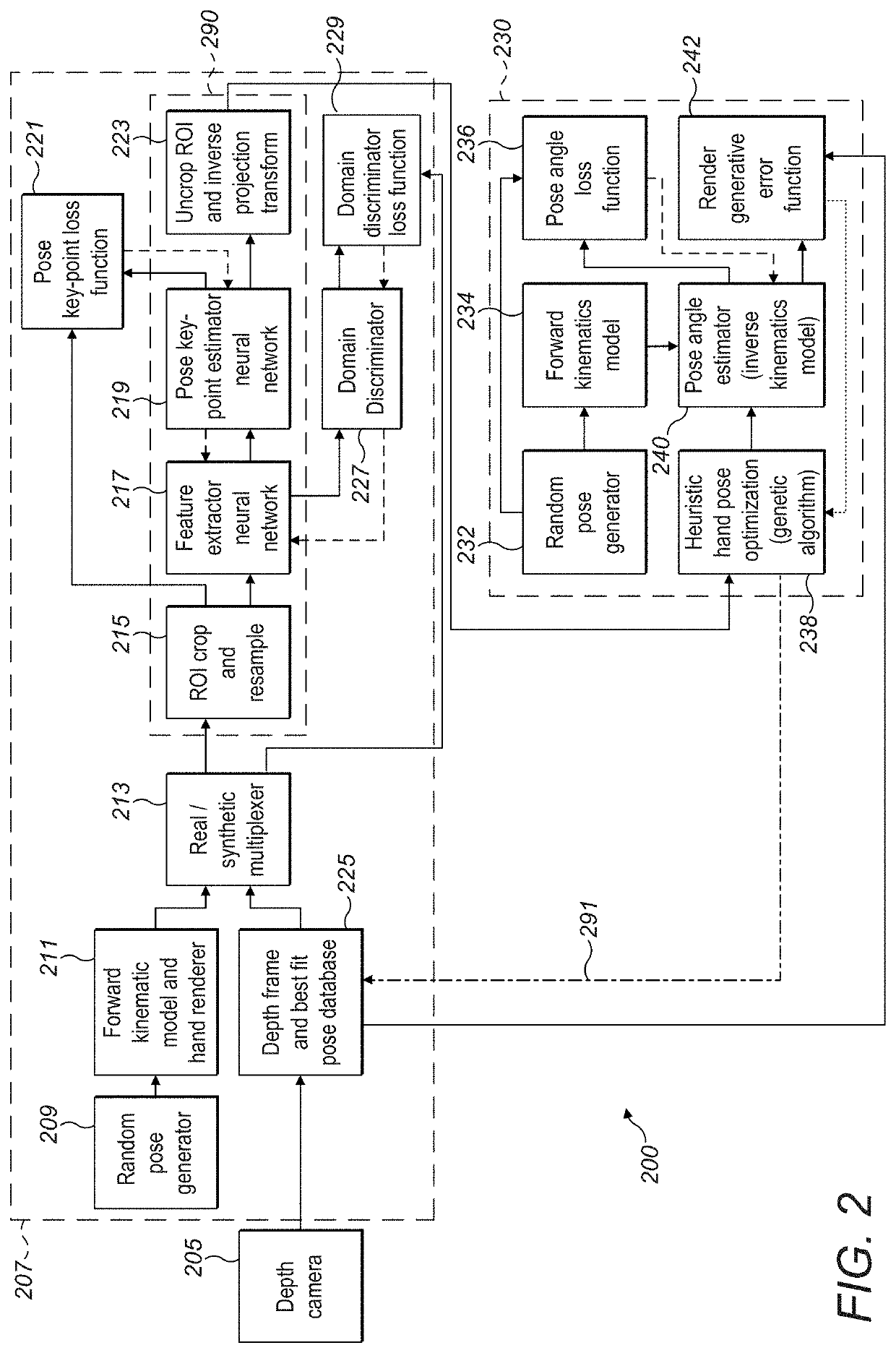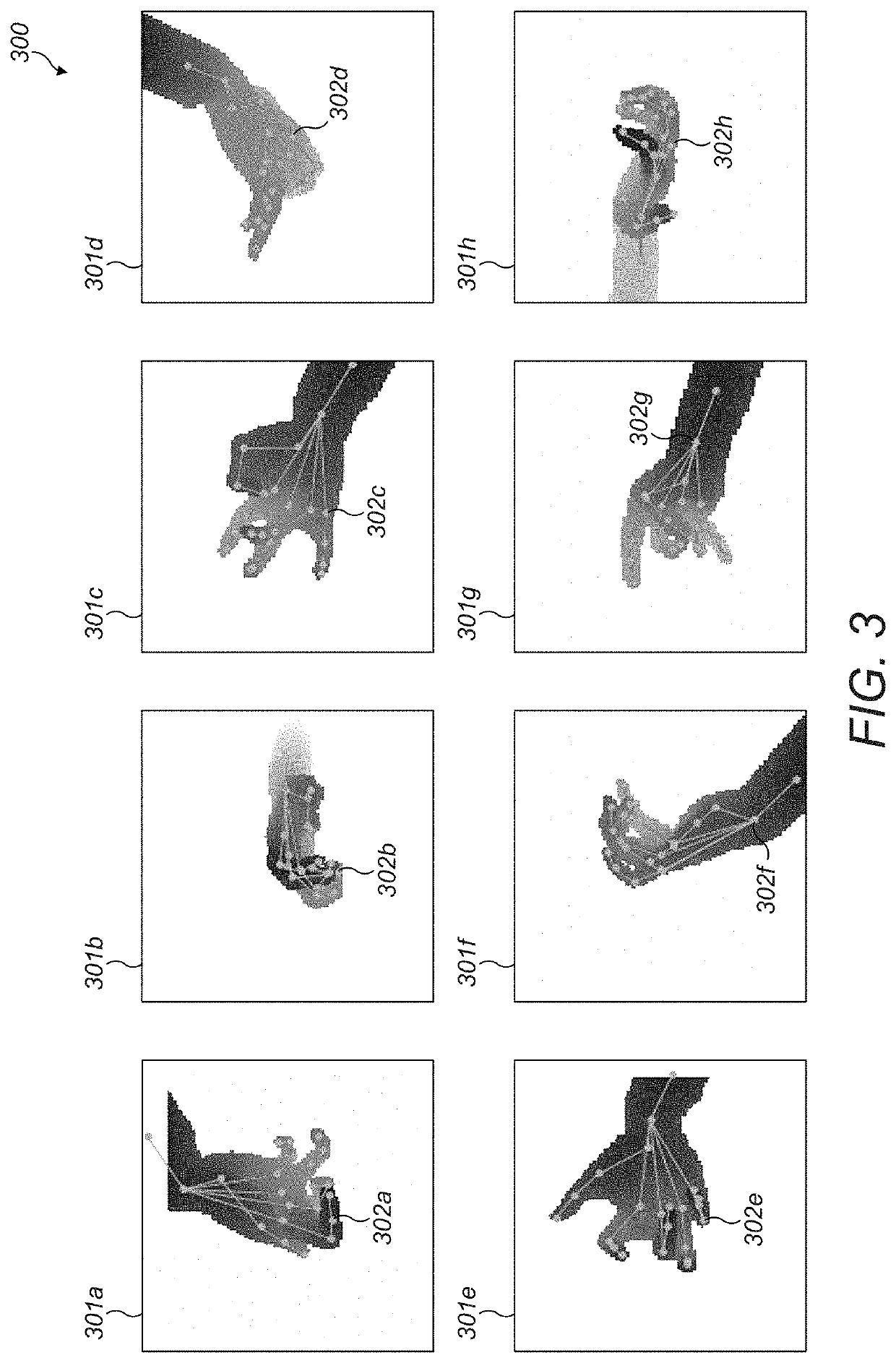Using Iterative 3D-Model Fitting for Domain Adaptation of a Hand-Pose-Estimation Neural Network
a neural network and domain adaptation technology, applied in the field of task of estimating human hand pose from depth camera frame, can solve the problems of requiring a gpu to run at real-time, affecting the accuracy of the task, so as to achieve the effect of improving accuracy
- Summary
- Abstract
- Description
- Claims
- Application Information
AI Technical Summary
Benefits of technology
Problems solved by technology
Method used
Image
Examples
Embodiment Construction
[0028]The offline model training system can be split into two main subsystems that support each other: The discriminative model (neural network) that infers a pose from a single depth frame, and the generative 3D model fitting algorithm (genetic algorithm) that iteratively refines the 3D pose. The neural network is used to initialize the genetic algorithm, and the genetic algorithm is used to provide accurate labels in the target domain that are used for training the neural network. This presents the problem where each subsystem requires the output from the other subsystem. This problem is solved by using synthetically rendered labeled frames to initially train the neural network. During real-time pose estimation, only the neural network is used for inference.
[0029]Model Training
[0030]FIG. 2 shows the high-level system block diagram 200 of the training process using a depth camera 205. A neural network 207 is trained and the output from the neural network is used to initialize an it...
PUM
 Login to View More
Login to View More Abstract
Description
Claims
Application Information
 Login to View More
Login to View More - R&D
- Intellectual Property
- Life Sciences
- Materials
- Tech Scout
- Unparalleled Data Quality
- Higher Quality Content
- 60% Fewer Hallucinations
Browse by: Latest US Patents, China's latest patents, Technical Efficacy Thesaurus, Application Domain, Technology Topic, Popular Technical Reports.
© 2025 PatSnap. All rights reserved.Legal|Privacy policy|Modern Slavery Act Transparency Statement|Sitemap|About US| Contact US: help@patsnap.com



